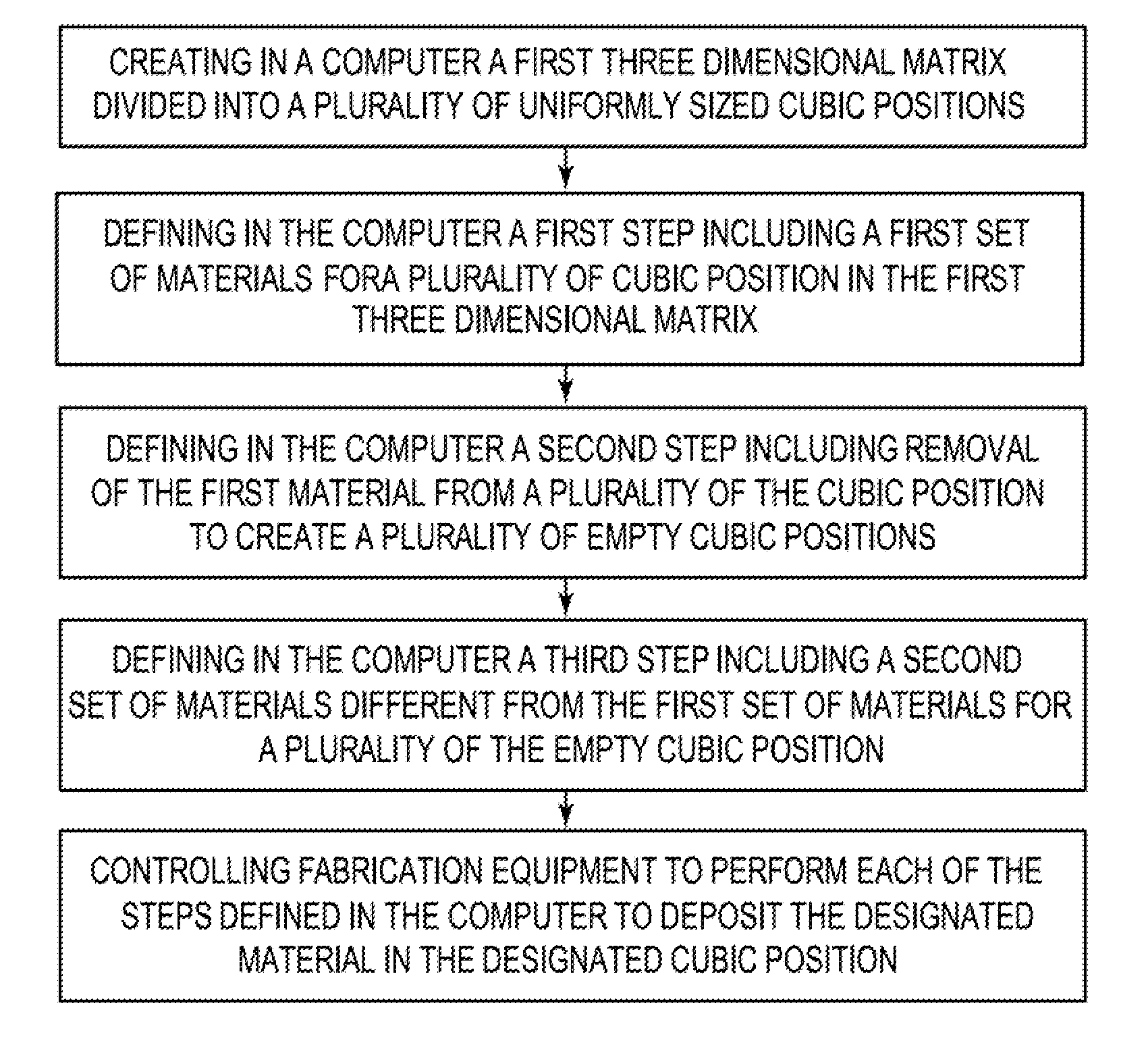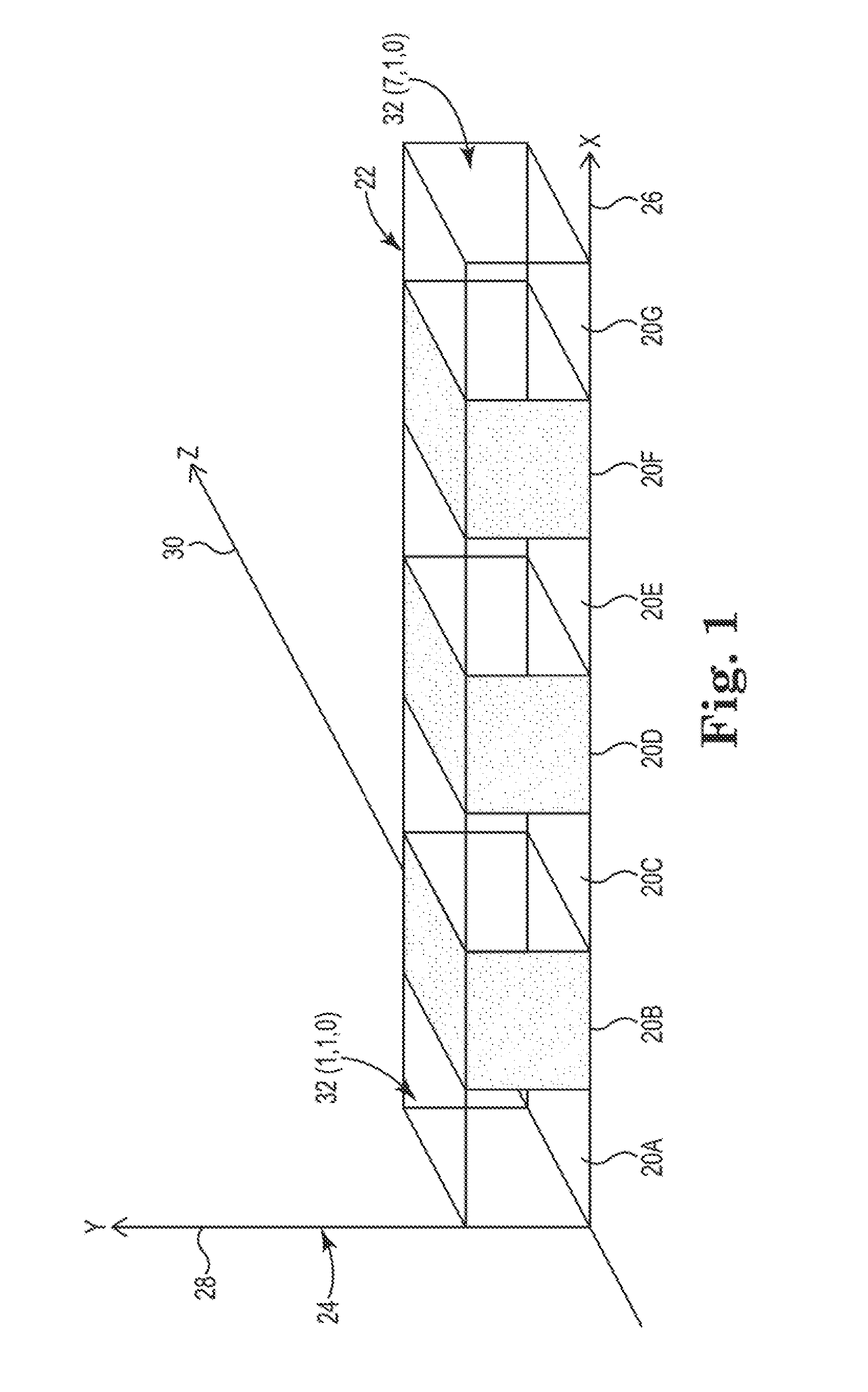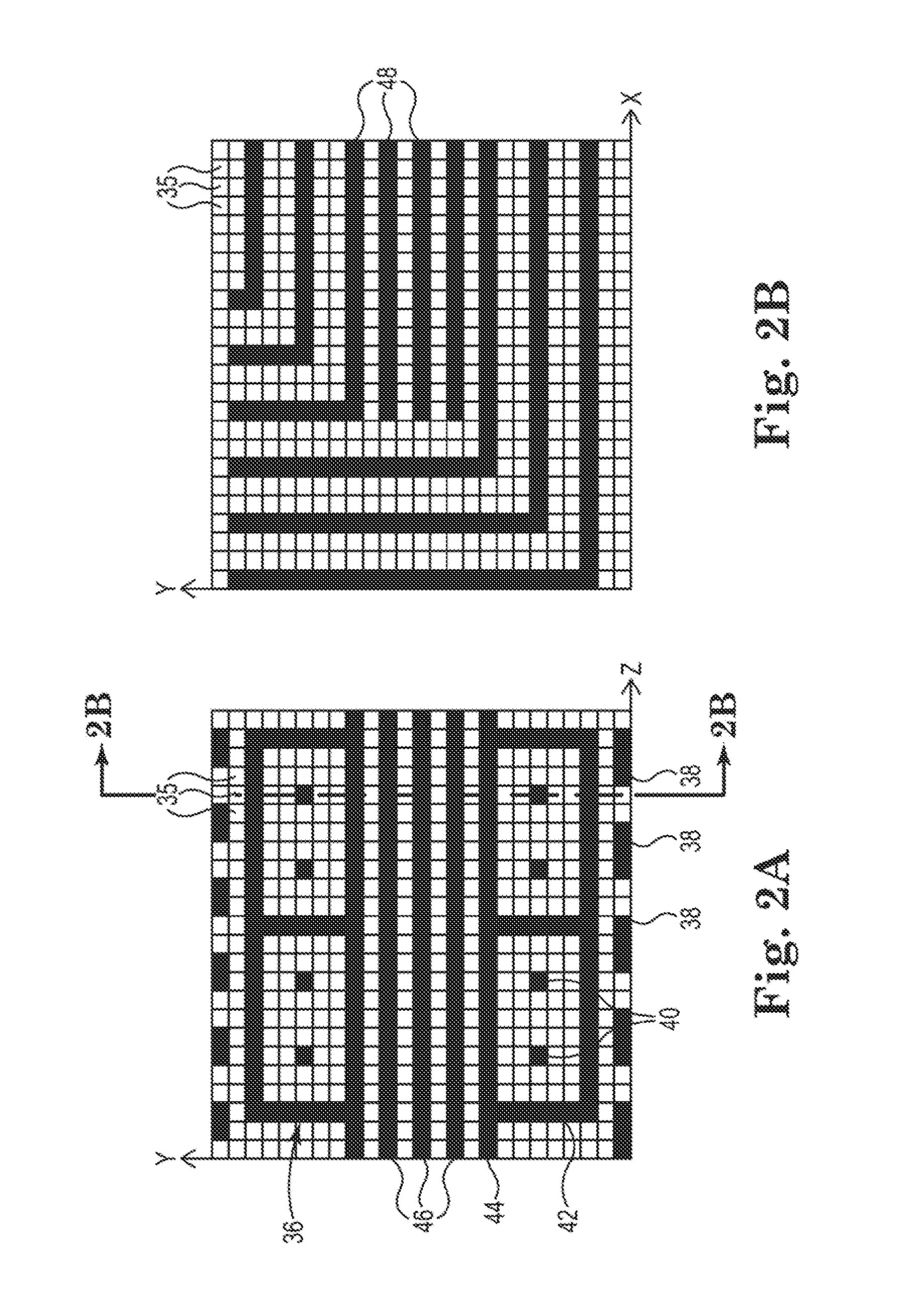Matrix defined electrical circuit structure
a technology of electrical circuit and matrix, applied in the field of matrix defined electrical circuit structure, can solve the problems of rigid pcb products, rigid pcb products, and limited layer count or feature registration, and achieve the effects of reducing parasitic electrical effects and impedance mismatch, dense functionalized structures, and increasing current carrying capacity
- Summary
- Abstract
- Description
- Claims
- Application Information
AI Technical Summary
Benefits of technology
Problems solved by technology
Method used
Image
Examples
Embodiment Construction
[0050]The present disclosure is directed to a system for “pixelating” a three-dimensional circuit structure into a three-dimensional matrix of cubes that are located with respect to a coordinate system. The present system and method can be used to both design and fabricate the circuit structures. The fabrication process involves adding and removing bulk materials from the individual cubic units within the pixelated representation of the circuit structure.
[0051]Various existing and new techniques are used to add or subtract bulk materials as the cubic positions within the matrix to construct the circuit structure, including U.S. Ser. No. 13 / 413,724, entitled Copper Pillar Full Metal Via Electrical Circuit Structure filed Mar. 7, 2012; U.S. Ser. No. 13 / 410,943 entitled Area Array Semiconductor Device Package Interconnect Structure with Optional Package-to-Package or Flexible Circuit to Package Connection, filed Mar. 2, 2012; U.S. Ser. No. 13 / 700,639 entitled Electrical Connector Insul...
PUM
| Property | Measurement | Unit |
|---|---|---|
| size | aaaaa | aaaaa |
| dielectric constant | aaaaa | aaaaa |
| aspect ratio | aaaaa | aaaaa |
Abstract
Description
Claims
Application Information
 Login to View More
Login to View More - R&D
- Intellectual Property
- Life Sciences
- Materials
- Tech Scout
- Unparalleled Data Quality
- Higher Quality Content
- 60% Fewer Hallucinations
Browse by: Latest US Patents, China's latest patents, Technical Efficacy Thesaurus, Application Domain, Technology Topic, Popular Technical Reports.
© 2025 PatSnap. All rights reserved.Legal|Privacy policy|Modern Slavery Act Transparency Statement|Sitemap|About US| Contact US: help@patsnap.com



